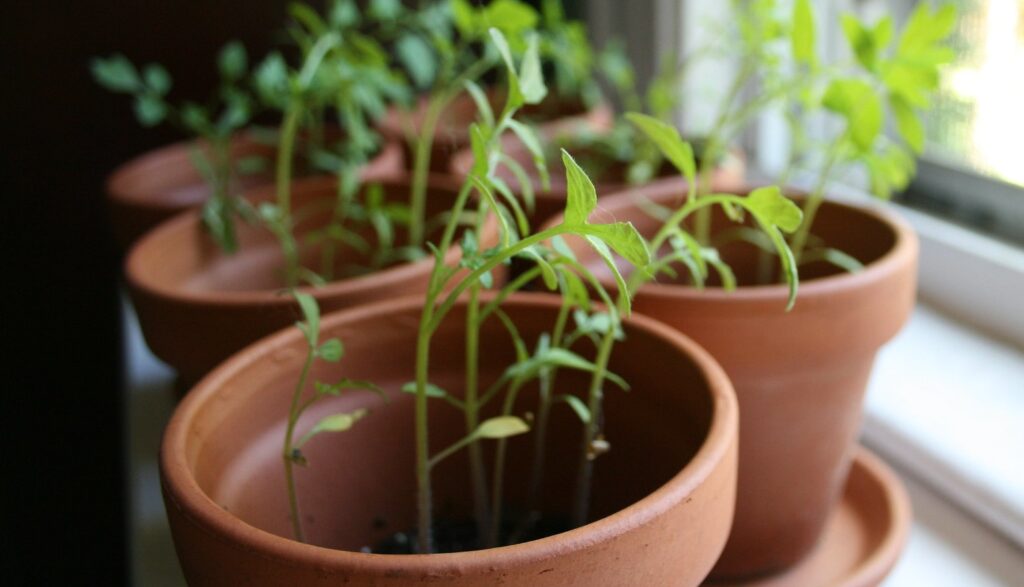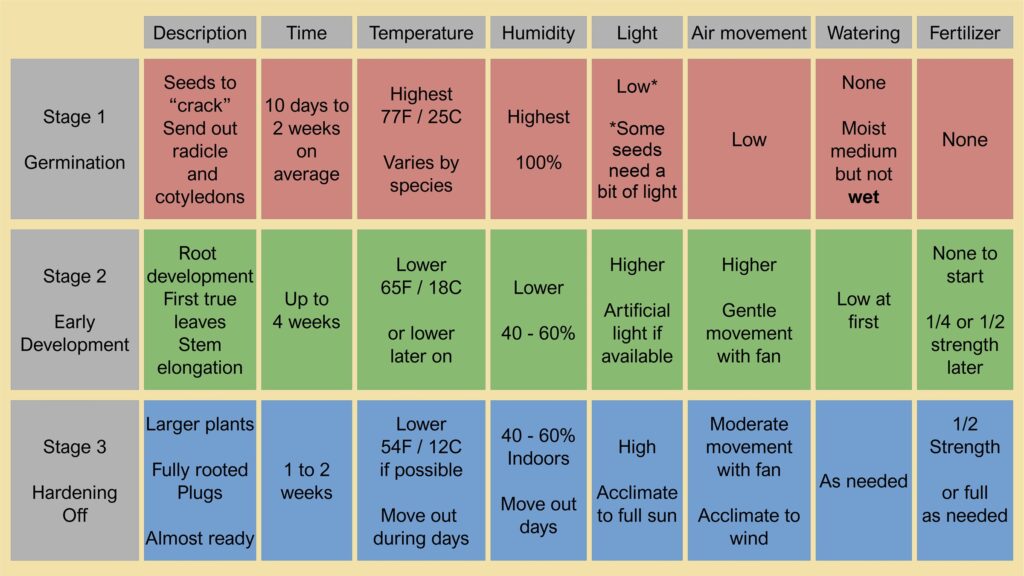Depending on your climate, it may be downright necessary to “cheat” out ahead of spring planting season by starting seeds indoors ahead of time. For some seeds like squash, recommendations may range from 2-4 weeks ahead of the season – that’s not a long time, but they’re fast growers! Other varieties like hot peppers or snapdragons are often started from 10-12 weeks in advance of the last frost date. That’s a long time to take care of seedlings indoors, and one common problem is when these seedlings may grow leggy and weak-stemmed during their time inside.

They’re stretching for the light. Sometimes you’ll even see them take a pronounced “lean” in the direction of a window or other light source. The thing about starting seeds indoors is that they need everything they would in nature, but now you have to control it all:
- Light
- Temperature
- Air movement
- Humidity
- Watering
- Nutrients
The simplest answer for leggy seedling is usually that they lack for light. The more complicated answer is that high temperatures, humidity, and lack of air movement can also contribute to weak, stretchy plants. Before I add more specifics, let me add this hopeful notion: even if you didn’t get it exactly right from the start, you can often coax those plant starts into better health by giving them what they need after the fact. In this video, I show you a tray of tomato seedlings I deliberately deprive of light – and show how I help them to recover from my mistreatment:
While all the environmental conditions are important, it really is the supplemental light that makes the biggest difference between strong, beefy seedling and weaklings. In the above video you would have seen me using a purple LED for artificial light, but I’ve certainly found since then that there are good affordable full spectrum (white) LED panels that will do the job beautifully. Depending on the number of trays you’re starting, the entry level light I can recommend include the SpiderFarmer SF1000 and the Mars TS600. Even an LED fluorescent replacement will do in a pinch for a couple of trays.
As is usually the case when I release a video with high viewership, I find out in the comment where I wasn’t specific enough. What’s the recommended temperature during germination, early development and the hardening off stage? How about humidity, air movement and fertilizer? Here’s a reference chart and video I produced to answer some of these questions:

I hope the above offers enough information to get your seedlings a good start. Following these earliest stages, and once you “graduate” the seedlings from indoors to outdoor growing there are a few additional steps I cover in this video: fertilizing, transplanting, thinning and pinching.
While I’d say it’s totally worth it to get a jump on slow-growing perennials or long-season veggies, it’s also a lot more work than sowing seeds directly into the garden. Direct-sowing is the right call for fast growing cool-season veggies like peas or radishes. It also makes sense for plants that don’t accept transplanting well, like beans or carrots.
For those you do decide are worth the extra time and effort to start early, make sure to set yourself up for success in advance. Supplemental lighting, a fan or two for air movement, and some well-timed adjustments to temperature and humidity can make all the difference to quality of your plants by the time they’re ready for your garden.
